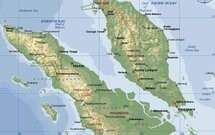 In May 2013, China will be linked directly to the Bay of Bengal in the Indian Ocean by virtue of a gas pipeline running from Kyaukpyu port in Myanmar to China’s Yunnan Province. This will mark the completion of the first in a number of projects aimed towards circumnavigating the Malacca Strait as an energy conduit for China. This article examines existing and long-term considerations to determine as to why China is pursuing this agenda, and why the Malacca Strait is perceived to be ‘risk-prone’.
In May 2013, China will be linked directly to the Bay of Bengal in the Indian Ocean by virtue of a gas pipeline running from Kyaukpyu port in Myanmar to China’s Yunnan Province. This will mark the completion of the first in a number of projects aimed towards circumnavigating the Malacca Strait as an energy conduit for China. This article examines existing and long-term considerations to determine as to why China is pursuing this agenda, and why the Malacca Strait is perceived to be ‘risk-prone’.
Malacca Strait: Southeast Asia's Main Artery
The Malacca Strait links economies and enables the fulfilment of energy needs. Joining the Indian Ocean to the Pacific Ocean, it is one of the busiest commercial shipping pathways in the world, and is home to the busiest port. Littoral states including Singapore, Malaysia, and Indonesia, are dependent on business in the Strait to sustain their GDPs. User nations, including China and Japan, depend on the smooth functioning of the Malacca Strait for foreign energy sources and economic trade routes. The status quo serves both; however, the long-term implications of three key areas, logistics, security, and power strategies, need to be considered.
Logistics
The Strait offers a route that is faster and more economic than alternate pathways around the Indonesian islands. The infrastructure, with respect to berthing and refuelling, is well established and therefore offers a clear and predictable logistical pathway.
The current volume of traffic along the Malacca Strait is estimated to range from 60,000-85,000 commercial ships passing through per year. Compounding traffic flow is the structure of the Strait, which has a natural bottleneck near Singapore, as well as a number of shallow sections requiring ‘Malaccamax’ cargo ships for passage. Investments in ship design as well as in the Strait, to enhance navigation, aims to prevent disruption through traffic jams and grounding. Presently, the Strait offers a relatively smooth transit but the phrase, ‘just enough, just in time’, used to describe oil shipments implies that there is not much room for disruption.
Continued development and growth, particularly in China, are likely to catalyse an exponential increase in the quantity of traffic on the Strait within the next ten years. As needs increase, so will the rate at which needs must be addressed, which will heighten delivery pressures. Higher numbers and greater stakes may translate to increased risks of incidents of disruptive events, such as collision or grounding, as well as more substantial bottlenecking and longer delays. In addition to impacting delivery, this outcome would enhance security concerns.
Security
In 2004, Cooperation Measures (CMs) between littoral and user nations were devised to address a spate of piracy and armed robberies in the Strait. The unified approach made piracy a more hazardous venture, and incidents declined. The need for constant vigilance, however, was emphasised in February when a Japanese cargo ship was hijacked. A number of attacks in Indonesian waters during the early part of 2013 also demonstrate the pervading nature of this threat, and renews the perception of risk associated with the Strait.
Pirate attacks, separatist groups, and underground economies each present a threat, but of greater concern is the potential for terror groups to exploit these respective methods, sentiments, and networks. The Al Qaeda, Jema’ah Islamiyah, and Free Aceh separatist movement are cited as groups with the infrastructure, connections, local knowledge, and agenda to most likely attempt a terror attack at sea. The logistics of conducting such an attack make this an unlikely scenario, but it is the ‘high impact’ aspect of the ‘low probability’ event that is important to consider.
Power Strategies
In addition to security vulnerabilities, there exists potential for the Strait to be used as a tool of access denial. This is not lost on China, particularly given their strategic leaning towards access denial as an avenue of active defence. India and the US have cemented positions at the mouth of the Strait via the INS Baaz port; and maritime rivalry, particularly between India, China, and Japan, may play out through key ocean passages. A reduced reliance on the Malacca Strait would dilute the power of this tactic against China.
Burden sharing initiatives and cooperation measures also provide openings for diplomatic connections and dialogue to insure nations against denial strategies. Although Malaysia and Indonesia have been insistent that the Strait does not become ‘internationalised’, thus denying foreign patrols, states like the US and China have invested money and in-kind support to the projects. These actions consolidate both the security of the Strait, and their soft power position as contributors.
The Malacca Strait is a critical strategic waterway and both littoral and user nations are key stakeholders. From the US and Africa, to the Middle East and Asia, unencumbered flow through this sea artery is critical to keeping the heart of national economies beating. The perception of risk in relying on the Strait derives from existing and potential logistical, security, and power strategy factors. A long-term mission to secure bypass options as contingencies to protect interests from serious disruption makes practical sense.
Courtesy : Institute of Peace and Conflict Studies (http://www.ipcs.org)